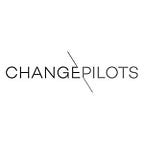JOB SHADOWING for lifelong learning & qualitative research — 02
What have we learned from this experience, outside of the gained knowledge & tools? / Job Shadowing at SITRA
>>> To read the first part of the article click HERE >>>
The key learning our team has gained comes from the human-to-human (H2H) interactions and the inspirations we’ve gained from visiting Sitra’s team in their everyday environment. Also, Sitra’s genuine interest in our team and line of work, mutual learning approach as well as the transparency and openness to share knowledge was something that fueled this amazing mix of know-how exchange and goosebump making conversations. Below we have gathered for you our top insights & lessons learned from our visit:
01Talking about change — do not point fingers, point the direction
For those exposed to change but not accustomed to working with it may be scary and create the opposite. Take for example someone who just turned vegan, discovered the benefits for her/himself and got excited about the benefits and powerful change she/he has experienced. There is a high chance that this person will try to talk about the change with their relatives by commenting on how one should eat better. In effect, this may rather cause the refusal to change. In many dietary books, such an approach is called the Missionary Complex.
02Talking about change takes not only the right communication but also the right strategy &universal human language
We have learned how important it is to start a discussion about the upcoming predicted social and economic changes as soon as possible, as well as how to use the right language in the era of scaring adrenaline-fueled news, climate depression and decision paralysis that many currently face. It is crucial to implement positive acknowledgment and include a big picture and next steps for others to be aware of or follow. At the same time, instead of pointing fingers at blaming, point to low-hanging fruit, solutions, and step-by-step change process. Strategize for the right flow on change discussion as you should be prepared to envision and implement different stages for communicating change. Also, Last but not least, use the universal human language of storytelling and visuals to support science and futuristic materials which often may not reach the desired audience.
03Talking about the future, when there is no one future
It might be a challenge for everyone in that discussion. When trying to draw the bigger picture of upcoming changes, it is best to return to current signals that communicate this direction. We have seen how Sitra navigates the discussion around Megatrends (long-term changes) by inviting its audience to discuss the supposedly plural futures which will be parallel to each other, not mutually exclusive. Such action is crucial to building an understanding of a) multiple scenarios that may take place as a result of singular direction b) the impact different stakeholders may have as change-makers.
04Feedback as a gift
During our conversations with various teams with experienced a genuine interest in both feedback as well as in diverse points-of-view on the topic discussed. Definitely, it was not a common culture standard we would often come across. Sitra teams complete their work by inviting different experts, professionals, and stakeholders to comment on the investigated and conducted projects. Escaping the comfort of being in your own sauce (being surrounded by the same type of people — i.e. scientists only, or social activists only), the organization is more likely to be able to receive unexpected feedback and (with the right tools) use it to the benefit of the project.
05More doing, less thinking
Several team members, we came across have described Sitra as think, do & connect tank and pointed to the experiments they conduct with outside stakeholders to analyze any topic they are working on. Such experiments might include various forms of workshops, co-creative working meetings or games, and hackathons. These could happen at various phases of the projects, from early research to ideation and concept testing. Probably one of the best Finnish examples of future experiments in action was the Basic Income Trial which Sitra supported in the background.
06Change is a team effort
Everyone has their own role in bringing solutions for a better future, whether social, environmental or economical. Change can’t be achieved without real participation and enthusiasm from those involved, as well as without sharing the knowledge, viewpoints and engaging in discussions and experiments.
Navigating the process of change is full of attention points, pit holes, and challenges. That lay in the responsibility of those who facilitate or communicate it. It is such a delicate matter that slight misuse or lack of awareness may create an opposite effect. And make others refuse or not even participate in a conversation about the change. Good strategy requires balancing between known and unknown, now and the future, constantly adapting to the project face or needs of those impacted.
>>> Read next part of the article 03 HERE >>>
#humancentereddesign #solutionbasedpsychology #circularthinking #systemthinking #servicedesign #longlifelearning #jobshadowing
#sitra #changepilots #changepilotsontour
Text: Henryk Stawicki, and Justyna Turek, co-founders of Change Pilots
